What is the best food for a Ragdoll Cat?
The question about what to feed a ragdoll kitten is probably the most FAQ we receive. Our Masterpiece families are looking to provide a long, quality life for their new family member so it’s natural to want to give them the best.
All the claims can be complicated and overwhelming, too.
Grain-free Cat Food
Hairball Control Cat Food
Premium Protein Cat Food
All Natural, Limited Ingredient Cat Food
All of these are great on their own, but is a kitten kibble grain-free, but potato-heavy? If a food has the wrong consistency (form), it won’t matter that the can food is limited ingredient or all natural. Some kittens and cats prefer a mousse; others prefer chewing so a shredded protein in broth is more to his liking.
There really is no single best food for a ragdoll kitten.
We recommend a raw, rotational diet. When proteins are cooked, vital nutrients are removed and manufactured ones must be added back in after the cooking process.
Raw meat is full of vitamins, minerals, and if mixed correctly, the most complete diet. Rotating different protein sources in the raw mix is important for ensuring long-term health. If a kitten or cat relies on a single source of protein, i.e. chicken and salmon day after day, he is likely to become picky. He will miss out on nutrients found in other animal sources such as pork, beef, turkey, rabbit.
Similarly, by choosing to feed the same bag of kibble every day, nutritional imbalances are likely. If you find you can’t keep your cat on a raw diet, choose a limited-ingredient, high protein, freshly sourced kibble and a water fountain for the required water intake. Did you know that at the time a cat begins drinking from the bowl or fountain, he’s already about 8% dehydrated? Kibble-only diets are associated with chronic cat dehydration which can lead to urinary tract infections and life-long conditions such as FLUDT. Dry food has high concentration of plant volume and cats simply do not need fruit and vegetables. When was the last time you saw a cat foraging for Rosemary Extract or pea protein? Bone broth, canned wet foods can help guard against dehydration, but a raw diet is best.
Once your ragdoll kitten is a ragdoll cat, experiment by adding in a new formula of dry food in with the old. Offer various formulas of wet food (canned, packets). Supplement with freeze dried meat-only treats fairly routinely as well. Be sure treats don’t begin to replace meals. Cats often find ways to train their people!
Obesity in Ragdolls
Obesity is something we hear about frequently in ragdoll cats. Because they are not particularly active compared to other breeds and they are large-boned cats, they may put on extra weight as they begin to enter their senior years. As we know, obesity is troublesome for many of the body’s organs and systems.
I caution kitten owners not to be too concerned with this during the kitten stage or even as your cat reaches 18 months to a year. Veterinarians who advise limiting calories of a kitten due to the potential for obesity are short-sighted. Kittens under the age of 12 months are more active and require more energy. Even cats between 1-3 years of age may require additional calories periodically. Ragdoll cats are a slow-maturing breed so we will witness some ebbing and flowing of their preferences and needs. So, Let ‘em eat! But also encourage exercise.
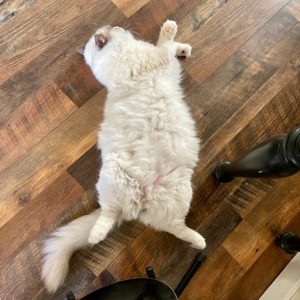
Raw Recipe Requirements for Radoll Cats.
An 80/10/10 raw (or gently cooked) diet is ideal.
This means that your cat needs a meal composed of
- 80% muscle meat – 15% of this should be heart for taurine
- 10% bone content (many are fine with 5%)
- 10% organ meat, of which 5% is liver and the other 5% should be another secreting organ, i.e. kidney, spleen, brain, testicles, pancreas.
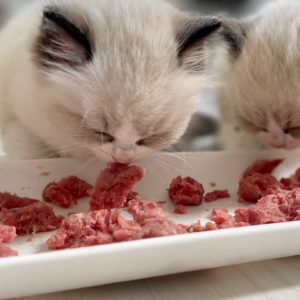
Ok, that’s a lot of math for the average pet owner, so we encourage families to turn to the marketplace for
limited-ingredient canned/wet foods
freeze dried raw (rehydrated)
commercially purchased raw complete blend meals
Commercial pet food manufacturers understand the ratios, and work diligently to arrive at appropriate levels and many add in additional ingredients that may be helpful (probiotics) or detrimental (vegetable, fruit, extracts, alternative fiber supplements). Read the labels. Take some time to make a decision that you can live with and your ragdoll cat can thrive with. After all, he’s family!
What brand of cat food should I buy for my Ragdoll?
A homemade, raw diet is the best cat food for a Ragdoll, but we don’t all have the capacity to DIY cat food.
Some of us are vegetarians. We don’t have meat grinders and designated raw meat refrigerators. Some of us struggle to source ingredients, mix them appropriately, and manage proper raw meat handling techniques. And many of us have kiddos who may come into contact with the raw food and contract cat-safe bacteria.
Search for foods with limited ingredients. Spend a few extra dollars for a high-protein, limited-ingredient bag of kibble. Determine your cat’s texture-preference . Once you know what she likes, consider a bulk order of cans or packets. Check out Nulo! Nulo has a variety of textures and flavors in cans and packets without the miscellany of many other products on the market.
Look for the following on cat food labels:
- Protein from high quality meat source. Cats get their energy from protein, not carbohydrates.
- Healthy Fats – fats from specifically-named animal sources
- Fiber content – 5-10% is needed and fingers crossed it comes from something other than starches and miscelaneous veggies
- Moisture content – in the wild, cats capture their prey whose moisture content hovers around 70%. Kibble won’t have that much of course, but consider alluring water fountains and supplemental canned foods that are high in moisture.
Visit a local snooty foody pet food store. In the PNW, Mud Bay Pet Store staff can steer you towards the best cat food for a ragdoll cat/kitten. They offer excellent literature and sometimes even have free samples for your kitten to test out. The staff is passionate about nutrition and will share their research and wisdom with you for free!
Texture, consistency, and bite size all contribute to a food’s mouthfeel and can be factors in whether or not a cat accepts a new food.
– A Cat’s Eye View @ Mud Bay
There are many different brands competing for your attention. Look for what is fresh, too. Is the bag dusty from a long shelf life? Read ingredients lists online and order from home if the shopping experience is overwhelming.
Transition slowly to new foods. An abrupt change can cause GI distress.
The Ragdoll Litterbox.
When you have as many litter boxes as we have, you hope for minimal variation in production. This is a nice way of saying, we hope to keep the area clean. The best possible diet will yield fully-formed stools, easy to sift out of the box and leave kitten bottoms tidy as well.
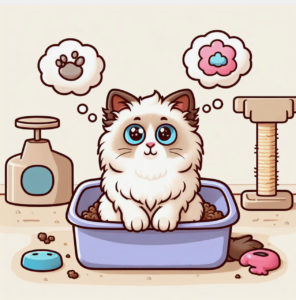
This is especially important for us as we seek to isolate digestive and intestinal conditions in kittens at an early age. What we discovered in breeding is that all the miscellany in commercially-duced foods could induce litter box havoc. Even though fed high quality food AND we presented fecal samples to the vet who ultimately found no parasites, we found our boxes to be a bit putrid smelling. So, we treated unverified bacteria on the off chance there was something there. Still, litterboxes were unpleasant. It was only when we began to control the ingredients consumed by our kittens that we could rule out food sensitivities, parasites, or other nefarious agents. All kittens responded positively: quality coats, noticeable growth, and fewer, more tidy trips to the litterbox.
A clean environment is a healthy environment.
The best food for a ragdoll kitten might be different for us than for you. What works for us at the cattery might not work for you at home. We won’t judge you! We are here to support your lifestyle as you incorporate a Masterpiece in your every day life.
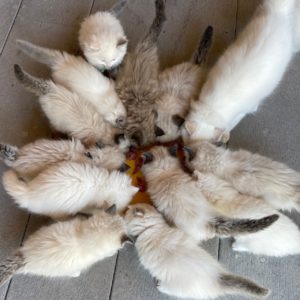
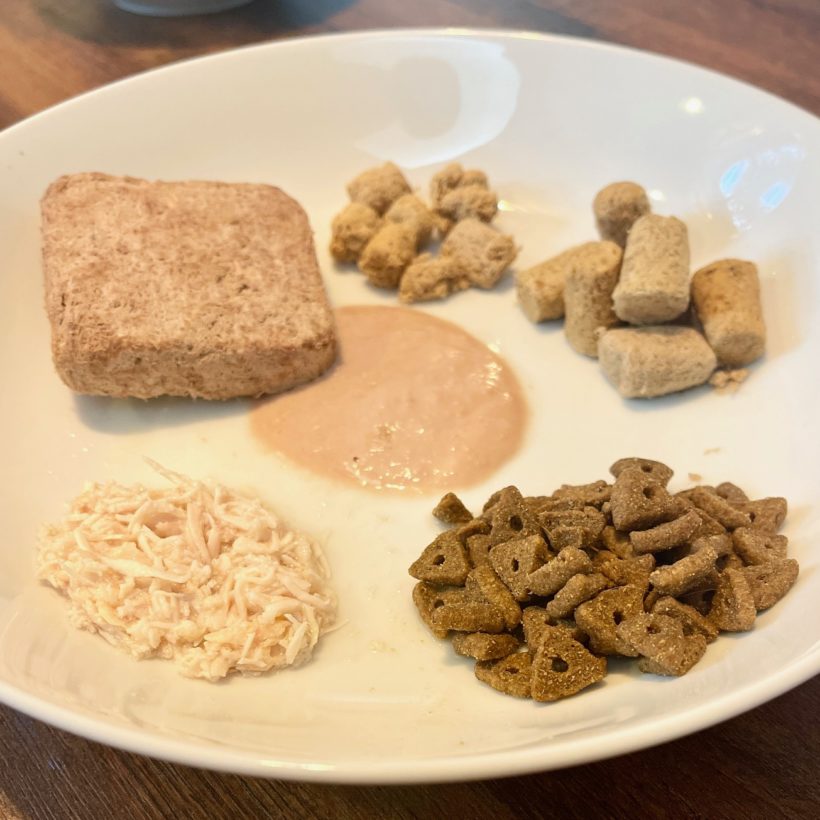
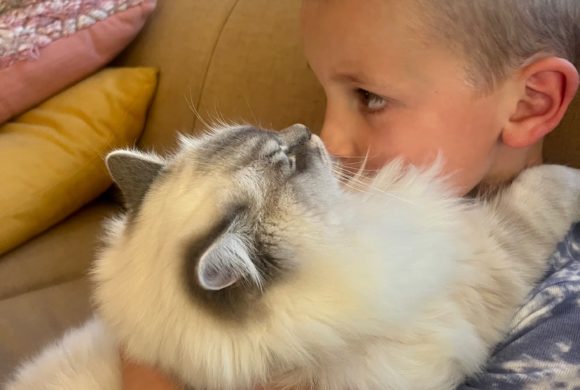
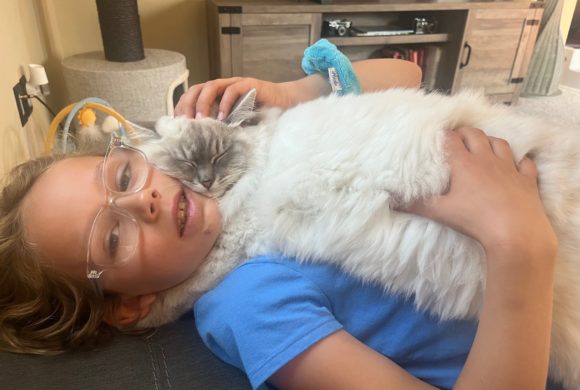
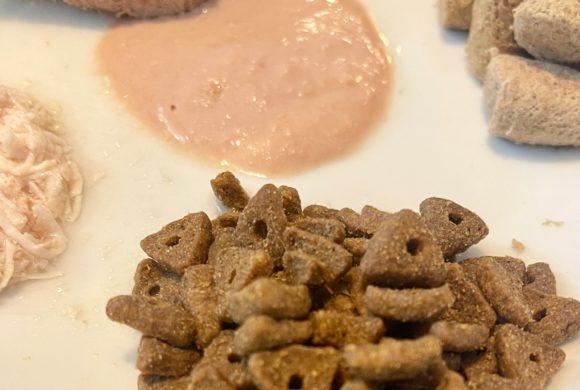
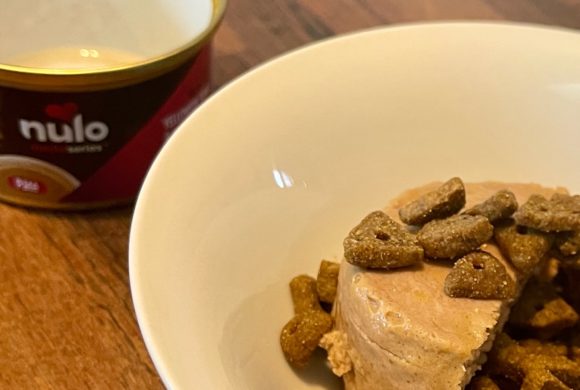
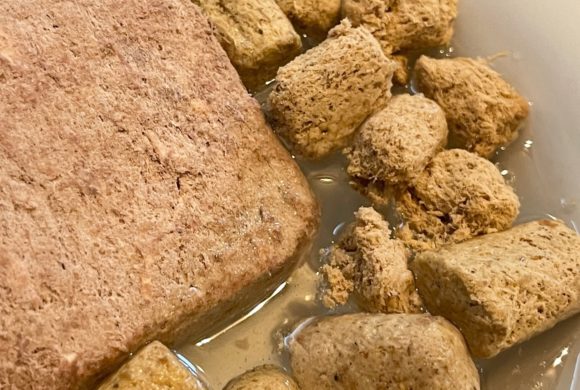
Leave a Reply